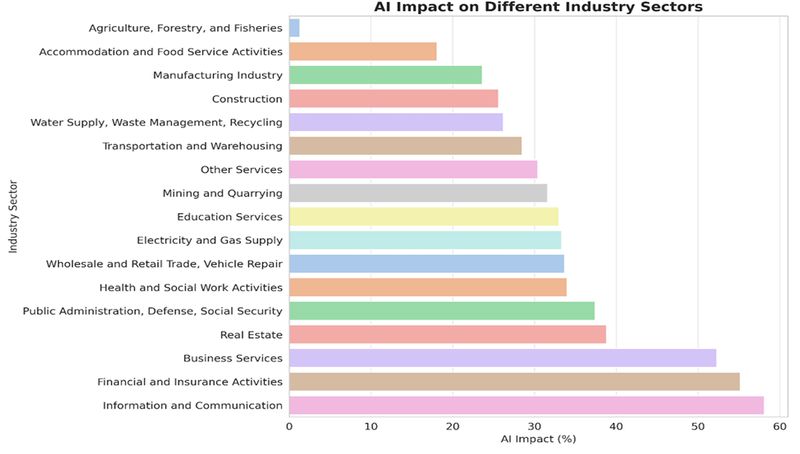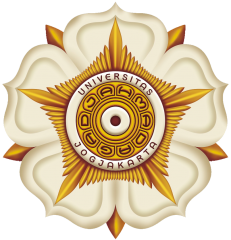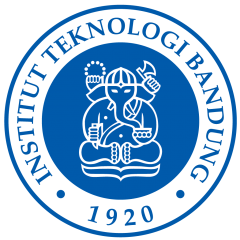Bahasa Inggris tingkat lanjut menjadi salah satu mata pelajaran (mapel) pilihan yang bisa dipilih peserta Tes Kemampuan Akademik (TKA). Mapel ini cocok dipilih untuk detikers yang memerlukan validasi tambahan terkait kemampuan bahasa Inggris milikmu.
Bila ingin mendaftar Seleksi Nasional Berdasarkan Prestasi (SNBP), mapel ini cocok untuk detikers yang akan melanjutkan studi ke program studi kebahasaan atau pendidikan bahasa. Dalam ketentuan resmi Kemendikdasmen, bahasa Inggris tingkat lanjut punya 2 kisi-kisi utama.
Berbagai soal yang diujikan akan berkaitan dengan teks exposition dan teks discussion. Bagaimana bentuk soalnya?
SCROLL TO CONTINUE WITH CONTENT
Dikutip dari dari laman resmi Pusat Asesmen Pendidikan (Pusmendik) Kemendikdasmen dan buku TKA Mapel Wajib SMA/MA 2025/2026 karya The King Forum Tentor Indonesia berikut 20 contoh soal TKA mapel Bahasa Inggris Tingkat Lanjut selengkapnya!
20 Contoh Soal TKA SMA Mapel Bahasa Inggris Tingkat Lanjut
Text below is for question number 1-3
Cristiano Ronaldo dos Santos Aveiro also known as Cristiano
Ronaldo is a Portuguese professional footballer who plays as a forward for Spanish club Real Madrid and is the captain for the Portugal national team. He was born on 5 February 1985. By the age of 22, Ronaldo had received Ballon d'Or and FIFA World Player of the Year nominations. The Following year, in 2008, he won his first Ballon d'Or and FIFA World Player of the Year awards. He followed this up by winning the FIFA Ballon d'Or in 2014 and 2014. He also won the 2013-14 UEFA Best Player in Europe Award. In January 2014, Ronaldo scored his 400th senior career goal for club and country aged 28.
Ronaldo is regarded by some in the sport to be currently the best player in the world and one of the greatest of all time, alongside rival Lionel Messi. He is the first Portuguese footballer to win three FIFA/Ballon d'Or, and the second player to win three European Golden Shoe awards. With Manchester United and Real Madrid, Ronald has won three Premier Leagues, one La Liga, one FA Cup, two football League Cups, two Copas del Rey, one FA Community Shield, one Supercopas de Espana, two UEFA Champions Leagues, one UEFA Super Cup, and two FIFA Club World Cups.
1. What had Ronaldo achieved in 2007?
A. He had received Ballon d'Or and FIFA World Player of the Year nominations
B. He won his first Ballon d'Or and FIFA World Player of the Year awards
C. He scored his 400th senior career goal for club and country
D. He won UEFA Best Player in Europe Award
E. Ronaldo has won three Premier Leagues
Jawaban: A. He had received Ballon d'Or and FIFA World Player of the Year nominations
2. Which one of the following is NOT the achievement of Ronaldo?
A. the first Portuguese footballer to win three FIFA Ballons d'Or
B. the second player to win three European Golden Shoe awards
C. the winner of three Premier Leagues and one La Liga
D. the best keeper for the Portugal national team
E. the winner of two Football League Cups
Jawaban: D. the best keeper for the Portugal national team
3. "Ronaldo is "regarded" by some in the sport to be currently the best player in the world and one of the greatest of all time, alongside rival Lionel Messi." (Paragraph 2)
What is the similar meaning of "regarded"?
A. disrespected
B. considered
C. excluded
D. known
E. helped
Jawaban: B. considered
The text for questions 4-6
AI is increasingly used in various areas of life, including the workplace. While some support this development, others express concern. Below are arguments for and against the use of AI at work.
Supporters present three main points. First, efficiency and productivity. AI can handle repetitive, monotonous tasks without fatigue, allowing employees to focus on more complex and creative work. This increases output and saves time. Second, better decision- making. AI can analyze vast amounts of data quickly, identifying patterns and trends that help managers make informed, data-driven decisions. This leads to more accurate forecasts, improved employee engagement, and better overall results. Third, learning and development. AI can enhance employee engagement by offering personalized training. AI systems can detect skill gaps and recommend tailored programs, helping employees grow. This benefits both workers-by boosting confidence and capability-and companies-by fostering more skilled, loyal, and satisfied staff.
Critics, however, raise several concerns. First, job displacement. As AI takes over tasks once handled by humans, there's growing fear of job loss, causing stress among workers. Second, lack of human touch. Despite its capabilities, AI cannot replicate the empathy, emotional intelligence, and connection offered by human leaders-essential in many roles. Third, ethical and privacy issues. Concerns about data use require clear policies to ensure fairness, transparency, and respect for privacy, maintaining employee trust.
Conclusion: AI should be used in the workplace, but with proper regulations to maximize benefits and minimize risks. A cautious, well-planned approach is essential for the future.
 Contoh soal TKA bahasa Inggris. Foto: Pusmendik Kemendikdasmen Contoh soal TKA bahasa Inggris. Foto: Pusmendik Kemendikdasmen |
4. Based on the information given, Which industry sectors are heavily impacted by AI?
Click the Yes or No option for each statement!
A. Information and communication: Yes / No
B. Financial and insurance activities: Yes / No
C. Agriculture, Forestry and Fisheries: Yes / No
Jawaban: A Yes; B. Yes; C. No
5. Paragraph two mainly discussed AI as...
A. a tool to enhance workplace productivity and employee growth.
B. the cause of job losses and emotional stress among workers.
C. a system that replaces human leaders in decision-making.
D. a machine incapable of human empathy and connection.
E. the threat to employee's privacy and data security.
Jawaban: A. a tool to enhance workplace productivity and employee growth.
6. According to the text, as a student who will soon join the workforce, what should you do to compete with AI?
There is more than one correct answer!
A. Improve your emotional intelligence
B. Avoid industries where AI is widely applied
C. Undergo personalized training to close skill gaps
D. Switch to jobs with minimal technology involvement
E. Focus on tasks that require creativity and complex thinking
Jawaban: Pernyataan A dan E
This text is for questions 7-10
Charles Darwin was an English Natural scientist who laid down a framework for the theory of evolution-showing how Man evolved from lower life forms. At the time, his research and publication led to bitter controversy, but this theory of evolution and natural selection became accepted within the scientific community.
Charles Darwin was born on February 12, 1809 in Shrewsbury, Shropshire. He was born into a wealthy and influential family. His grandfathers included-China manufacturer Josiah Wedgwood, and Erasmus Darwin, one of the leading intellectuals of 18th century England.
Darwin planned to study medicine at Edinburgh University, but later, at the instigation of his father, changed to studying Divinity at Christ's College, Cambridge University. Darwin was not a great student, preferring to spend time examining natural science and beetle collecting. After gaining a passionate interest in natural science, Darwin was offered a place on the HMS Beagle to act as natural scientist on a voyage to the coast of South America.
On the voyage, Darwin made copious notes about specimens he found on his voyages. In particular, at the Galapagos Islands 500 miles west of South American, Darwin was struck by how the Finch was different on each individual island. He noticed that the Finch had somehow adapted to the different aspects of the particular island.
Over the next 20 years, Darwin worked on the dilemma of how species evolve and can end up being quite different on different islands. Influenced by the work of Malthus, Darwin came up with a theory of natural selection and gradual evolution over time.
In his theory, in the struggle for survival, the fittest win out at the expense of their rivals because they succeed in adapting themselves best to their environment.
Darwin continued to refine his theory, and would intensively breed plants to work on his theories. However, realizing how controversial his ideas waere, Darwin delayed publishing them. It was not until learning that another naturalist, Alfred Russell Wallace, had developed similar ideas, that Darwin was galvanized into publishing his own book. In 1859, the ground-breaking 'On the Origin of Species by Means of Natural Selection' was published, which immediately gained widespread interest and attention.
Darwin died on April 19,1882. He was given a state burial at Westminster Abbey.
7. Darwin stated to have great interest in natural science when he ...
A. entered school
B. made many journeys
C. spend a lot of time observing nature
D. his father encourage him to become a scientist
E. he dropped out form university and started to make a research on nature
Jawaban: C. spend a lot of time observing nature
8. What made Darwin think about the natural selection?
A. new idea about creatures
B. it supported the previous theory
C. influence of the previous theory by other scientist
D. the senior scientist did not like Charles Darwin
E. Charles Darwin had forced others to believe in his theory
Jawaban: C. influence of the previous theory by other scientist
9. Darwin's theory says that ....
A. the nature will select the species in random ways
B. the strongest species will always win the struggle for live
C. every species struggles for survival and they finally survive
D. only species that can make the best adaptation to the environment will survive
E. the species ability to make adaptation to the environment has a negative correlation to their opportunities for survival
Jawaban: D. only species that can make the best adaptation to the environment will survive
10. From paragraph 7, We know that Darwin was not .... enough to publish his book earlier.
A. proud
B. doubtful
C. selective
D. delighted
E. confident
Jawaban: E. confident
Text for questions number 11-13
In recent years, the world has seen a big change in how people pay
for things. More and more people, especially young ones, prefer using
digital payment methods like e-wallets, mobile banking, and
contactless cards. This new trend has given rise to what many call the
"cashless generation."
One main reason for this shift is convenience. Paying with a phone or
card is faster and easier than carrying coins and bills. People can now
buy food, shop online, or even pay for public transport with just a tap.
It also helps reduce the risk of theft since there is no physical money
to lose.
Another reason is the growth of technology. With smartphones
becoming common and the internet being more available, digital
payments have become part of daily life. Many schools and cafes now
even refuse to accept cash, encouraging young people to adapt to this
modern lifestyle.
However, there are some concerns. Some people argue that going
cashless can exclude older generations or those who do not have
access to smartphones or bank accounts. Others worry about privacy
and security, as digital payments can be tracked and hacked.
Despite these issues, the cashless trend continues to grow.
Governments and businesses are working to make digital payments
more secure and more available to everyone. It seems likely that the
future will be even more digital.
In conclusion, the cashless generation represents a big change in how
we handle money. While there are both advantages and
disadvantages, it is clear that cashless payments offer many benefits
in terms of speed and convenience. As long as we ensure that everyone
can join this movement, the cashless future could be a smart and
inclusive one.
11. Who is the author writing this text for?
The answers are more than one!
A. Teenagers and young adults adapting to digital payment.
B. Government officials promoting cashless policies.
C. Bank staff working on mobile banking systems.
D. Students learning about modern lifestyles.
E. People unfamiliar with digital technology.
Jawaban:
A. Teenagers and young adults adapting to digital payment.
D. Students learning about modern lifestyles.
12. According to the text, what are the main reasons why many people are going cashless?
The answers are more than one!
A. Digital payments are quicker and more practical
B. People want to save more by using e-wallets
C. Schools and cafes have started refusing cash
D. Using cards helps people earn extra income
E. Governments are banning physical money
Jawaban:
A. Digital payments are quicker and more practical
B. People want to save more by using e-wallets
13. How does the writer present different viewpoints about the topic?
A. By showing only negative effects of a cashless society
B. By clearly supporting the idea of going fully digital
C. By including statistics from international research
D. By giving emotional opinions from young people
E. By mentioning pros and cons of going cashless
Jawaban: E. By mentioning pros and cons of going cashless
This text is for questions 14-16
Kaka was born in Brazilia. From age 4 to 7, his family lived in Cuiaba, following father, a civil engineer. At age 7, the family moved to the city of Sao Paulo, in the neighbourhood of Norumbi, near the stadium of Sao Paulo FC. As FIFA says, "Kaka fails to fit the Brazilian stereotype of the kid from favela who first played the game in the street with a ball made from rags. Coming from a comfortable and cultured family, Kaka kept up his studies as long as they were compatible with his profession."
His talent was soon recognized. A professor called his family and suggested enrolling him in a football school. At age 8, Kaka was playing with Sao Paulo FC, where he succeeded in all categories. At age 14, Kaka used to wake up two hours early to keep up with his studies. Kaka managed to conclude the intermediary cycle (eleven years) in Brazil, before dedicating exclusively football.
In 2006, only 24 years old, Kaka was one of the Brazilian players in the World Cup. Despite the abundance of good players, Coach Carlos Alberto Parreira already said that Kaka would start as a principle. The group formed by Kaka, Ronaldinho, Ronaldo, and Adriano was called "the Magic Square" by Brazilian media fans.
14. Having recognized Kaka's talent, the professor suggested that .... in the football school.
A. he became a supervisor
B. he enroll as a member
C. he accomodate
D. he practiced more
E. he spent his free time
Jawaban: B. he enroll as a member
15. The main idea of paragraph 3 is ....
A. his talent was soon recognized
B. Kaka would start as principle
C. "Magic square" was formed by Kaka, Ronaldinho, Ronaldo, and Andriano
D. a professor suggested Kaka's family enrolling him in a football school
E. Kaka was one of the main Brazilian players in the World Cup
Jawaban: E. Kaka was one of the main Brazilian players in the World Cup
16. "His talent was soon 'recognized'" (Paragraph 2)
The word 'recognized' is closest in meaning to ....
A. predicted
B. registered
C. managed
D. succeeded
E. identified
Jawaban: E. identified
Text for number 17-20!
Smart Spending and Consumer Awareness
In today's world, where people encounter many kinds of goods and services every day, it is important to learn how to spend money in a smart way. Smart spending means using money carefully and with a plan. This idea is part of something broader called financial literacy, which helps people make good decisions about their money.
Smart spending starts with understanding the difference between needs and wants. Needs are things people must have to live, like food, water, and shelter. Wants are things people like to have but can live without, such as new clothes, phones, or eating out. People who understand this can manage their money more effectively.
Another aspect of smart spending is planning. Before buying something, it is helpful to make a list or create a budget. A budget is a simple plan that shows how much money comes in and how much goes out. It helps people avoid overspending or buying things they do not really need. This allows them to save money for the future or for something important, like education or housing.
Being a smart consumer also means being aware of how companies try to persuade people to buy more. Many stores use strategies such as big signs, sales, and colorful advertisements to make people feel they need to buy something. Sometimes, people buy things without thinking carefully. This is called impulse buying. A smart buyer will pause and think before making a purchase. They might ask, "Do I really need this? Is this the best price?"
In the academic context, students can practice smart spending in daily life-for example, when buying food at school, getting school supplies, or saving their allowance. Students who learn this skill early will be better prepared to manage their money as they grow up.
In short, smart spending and consumer awareness help people make better decisions with their money. With good habits and thoughtful planning, anyone can learn to use money wisely and avoid financial problems in the future.
17. According to the text, the purpose of a budget is to ....
A. help people buy more of the things they enjoy
B. make it easier to decide what to buy first
C. show how much money comes in and goes out
D. remind people of the products they want to buy
E. help people find better stores with lower prices
Jawaban: C. show how much money comes in and goes out
18. What is the best summary of the text?
A. Financial literacy helps people plan their shopping and find the best prices.
B. Needs and wants are the same and should be treated equally when spending money.
C. A smart buyer thinks carefully before buying and considers needs over wants
D. Planning a budget is useful because it helps people spend more money on fun activities.
E. Smart spending and consumer awareness help people make better decisions with their money.
Jawaban: E. Smart spending and consumer awareness help people make better decisions with their money.
19. Which of the following opinions are supported by strong reasoning or examples in the text?
There is more than one correct answer!
A. Smart spending helps people avoid buying things they do not really need.
B. Buying new clothes or eating out is always a waste of money.
C. A budget can help people save money for their future needs.
D. People who spend without a plan are bad at handling money.
E. Students learning money skills will manage their money better as adults.
Jawaban:
A. Smart spending helps people avoid buying things they do not really need.
C. A budget can help people save money for their future needs.
E. Students learning money skills will manage their money better as adults.
20. After reading the text, as a senior high school student, what can you do to be considered a smart shopper?
There is more than one correct answer!
A. Create a list before buying snacks in the supermarket.
B. Identify their personal needs versus wants.
C. Think carefully before purchasing school supplies.
D. Companies should not use signs and pictures to attract buyers.
E. Buying school supplies is not necessary if students have old ones.
Jawaban:
A. Create a list before buying snacks in the supermarket.
B. Identify their personal needs versus wants.
C. Think carefully before purchasing school supplies.
Itulah 20 contoh soal TKA mapel bahasa Inggris tingkat lanjut. Selamat belajar!
Simak Video "Video Wamendikdasmen: Belum Ditemukan Kecurangan pada Ujian TKA"
[Gambas:Video 20detik]
(det/nah)

























































